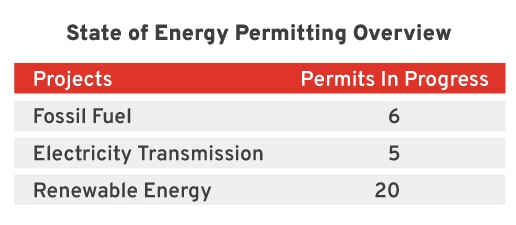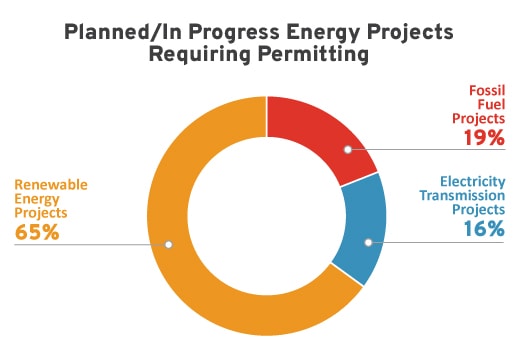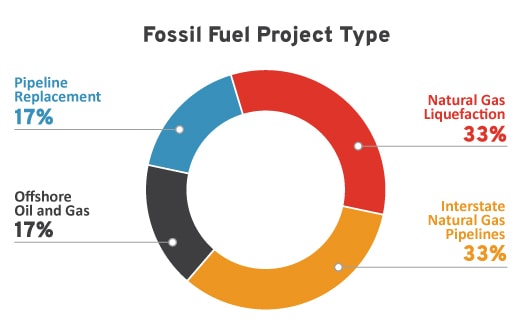Permitting reform is key for renewable energy, transmission and LNG exports
Permitting reform is one of the most pressing topics in energy policy today, but much of the discourse has been centered around specific projects, or hypothetical concerns. To better facilitate policy discussion, here is a simple overview of the state of energy permitting, utilizing the latest data from the federal government’s permitting dashboard.

Source: Permitting dashboard.
In total, there are 31 projects in the permitting dashboard that are categorized as either in-progress or planned related to energy. Renewable energy holds the largest share of energy projects, accounting for two-thirds of the total energy projects.

Source: Permitting dashboard.
Of the six in-progress, paused or planned fossil fuel projects, two were for liquefied natural gas (LNG) facilities, two were for interstate natural gas pipelines, one was for offshore oil and gas, and one was to replace existing pipeline.

Source: Permitting dashboard.
Importantly, LNG is primarily for export, especially to Europe, which is in an energy crisis as Russia has cut off sales to Europe in retaliation for sanctions put in place after its invasion of Ukraine. It is estimated that U.S. LNG sales are significantly lower life-cycle emissions when exported to Europe and Asia than competing Russian products or coal, meaning that U.S. LNG exports likely reduce global emissions by displacing higher-emitting incumbents.
Given the current data available from the permitting dashboard, it is unlikely that permitting reform that accelerates permitting timelines would negatively impact climate change. In fact, faster permitting is likely to improve emission outcomes as renewable energy, transmission and LNG exports would likely be the largest beneficiaries of improved permitting.








